In this Article...
There are many questions and confusion about customizing AutoCAD with CUI. It’s supposed to be simpler and easier than the old mnu or mns file. I never use the old way, but I believe yes, it’s easier to do it graphically like this.
So let’s discuss about customize user interface (or CUI). In this first article, we will discus about accessing the dialog and preparing our own CUI that we will use later.
You can open the dialog by clicking the button in manage tab>customization>user interface.
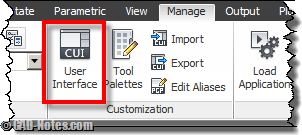
Or veteran users usually do it by typing CUI then [enter].
Customize User Interface dialog box
The dialog box probably looks a bit scary with all the commands, tree and graphics. While it looks complicated, it is arranged logically. And should be easy to understand.
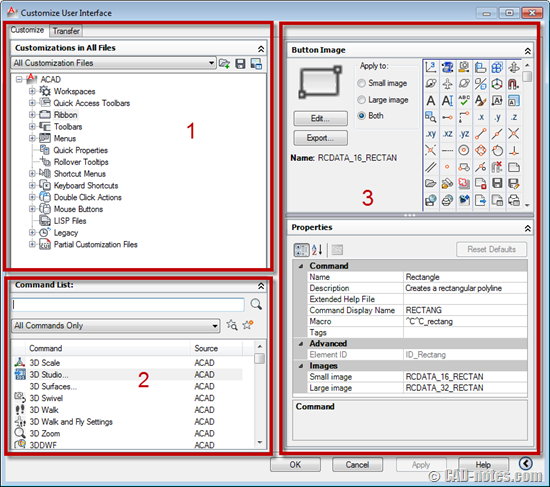
First, let’s understand what are the three panes are for.
1. Customization tree
Customization tree is where you can arrange your commands, menu, toolbars, panels, ribbon tabs, and other customization items.
If you click the + sign near an item, you will see sub items inside it. Let’s try to expand the ribbon.

Below the ribbon, there are tabs and panels. It also has contextual tab states: tab that will open when you select objects.
This is the way we define where our commands, panels, tabs, toolbars and other elements.
Depends to which version of AutoCAD you have, you can see all CUIx files loaded to AutoCAD. You can see it from customization files list dropdown or under the partial customization files category.
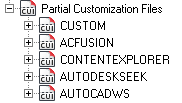
Try to expand ACFUSION.
Under each customization file, you will see they have the same element: ribbon, tabs, panels, and so on. If you expand the ribbon and panels, then you will see Inventor Fusion panel.
Where does it appear? It appears at ribbon tab.
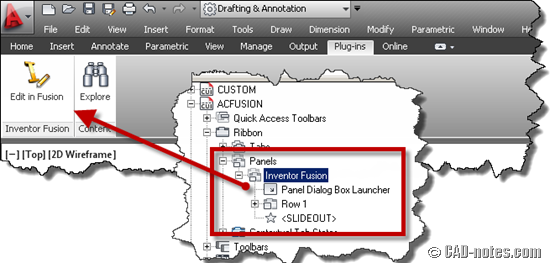
It is a good idea to create separate customization file and not messing the default acad.cuix. We will do it later in this tutorial.
2. Command list
Command list is the area where you can find existing command, or create a new command. Try to drag the slider on the right side of the command list. You should be able to see all commands here.
You can filter the command by typing in search field, or choose list to display from dropdown menu.
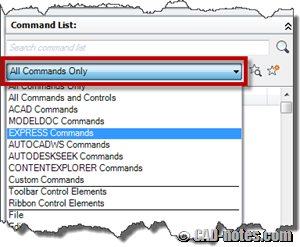
We will explore about creating new command on the next tutorial. If you only want to create a custom panel without creating a custom command, you only need to find default command here.
3. Properties pane
Select a command, then you should see the right pane (3) is updated. Now it shows this command properties.
You can change the button image, the command name, and macro that will be executed when you click the button. This is where you define the properties of commands, panels, tabs, and other elements.
We will define a new command properties on the next tutorial, and use it to fine tune our custom panel and tab on other tutorial.
Preparation
Before we start to make a customization, lets do some preparation. We will create a new CUIx file to work on this tutorial series.
Create a custom CUIx
Let’s create our own custom CUI. We will create commands, define panels and tab here. We will not use AutoCAD default CUI.
To create a CUI file, go to transfer tab in CUI dialog. Click new button or choose new from dropdown menu.
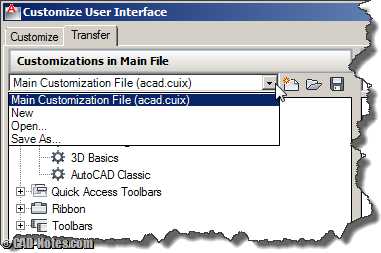
Click save to save it to a new CUIx file.
Load CUIx file
You have created the CUI file. But you haven’t load it yet. Go back to customize tab, then click load partial customization file. Or you can right click when selecting partial customization file, then choose it from contextual menu.
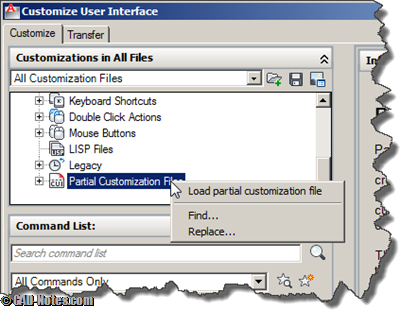
Find your saved customization file you saved in previous step, then load it. Now you should see your file listed both in dropdown menu and under partial customization files.
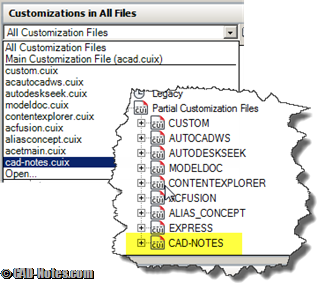
We will continue to work with customization on the next tutorial.




how do cuix for cui, please. tku
Hi thanks for the information. I am making a cui with three partial loaded cui’s. one is the acad, one is the express and the third is one I made. The one I made loads showing the explict file location (the whole path) the other two show just the file name. Do you know how I can make my cui load just the file name?
Thanks
hi.
tank you very well.
please export file autocad 2014 in site
I happy for see you.